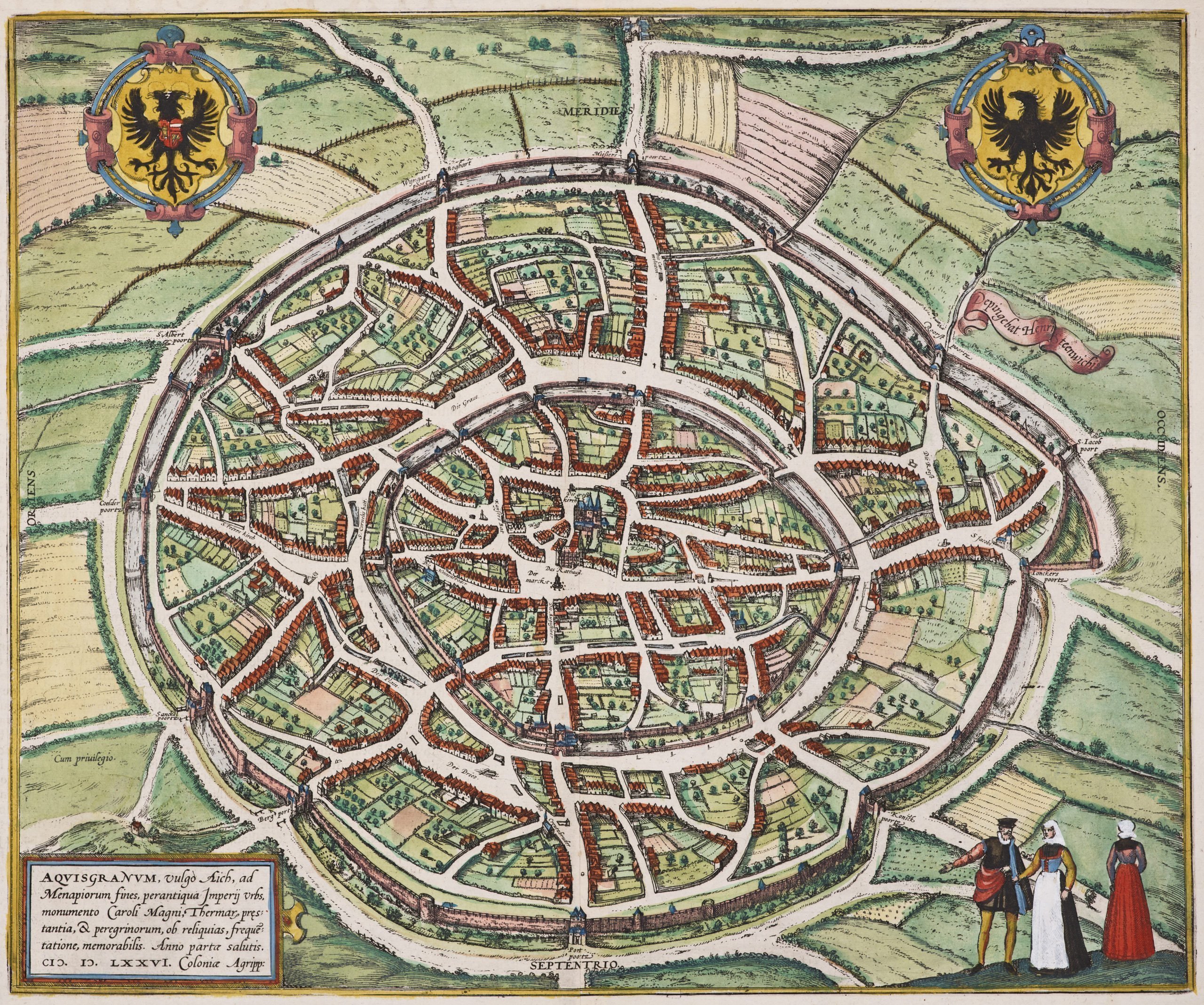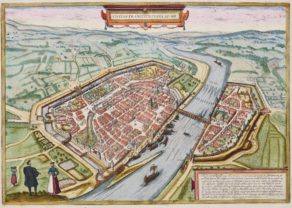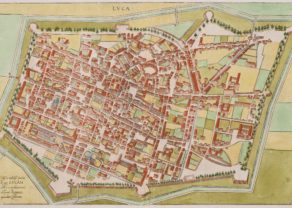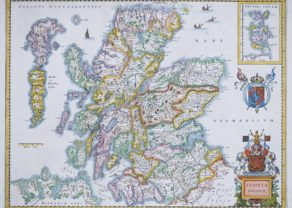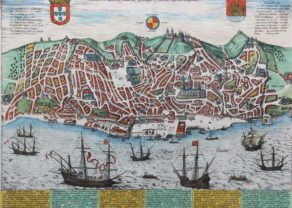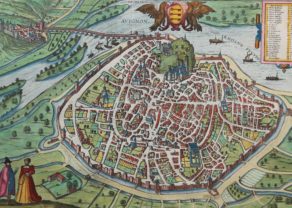Aachen – Aquisgranum
Imperial town
Detail
Date of first edition: 1572 (after Hendrick Steenwijck)
Date of this map: ca. 1572
Dimensions (not including margins): 39 x 32 cm
Condition: Excellent. Strong image with lovely old original colours and wide margins. On heavy paper. Centre fold as published.
Condition rating: A+
Verso: text in French
Map reference: Taschen, Br. Hog., p. 65 Van der Krogt 4, 3 state 2.
From: Civitates Orbis Terrarum, Liber primus
In stock
Description
TRANSLATION OF CARTOUCHE TEXT: Aquisgranum, or Aachen, situated on the borders of the territory of the Menapii, a very old imperial city.
COMMENTARY BY BRAUN: “The imperial city of Aachen lies between the Rhine and the Meuse on the border of the Duchy of Jülich and has become very famous for the first coronation of a Roman emperor and for the burial place of Charlemagne and the pilgrimage every seven years.”
This plan of Aachen from a bird’s-eye perspective appeared in 1582 in the new edition of the first volume. It is schematically surrounded by two elliptical city walls. The open marketplace, the Gothic façade of the town and the distinctive octagon with westwork and Gothic choir chapel of the cathedral can be seen exactly in the centre; the town houses on the other hand are miniaturized and the streets and squares are excessively wide for the sake of greater clarity. Aachen played a central role in the Holy Roman Empire. For this reason Braun emphasizes the “Heiltumsfahrt” (pilgrimage to the sacred relics), the construction of the palace and the Palatine chapel (c.800) and the hot sulphur springs, which had been appreciated earlier by the Romans. The Old High German word Ahha (Acha) means water; the Romans called the site Aquae Grani, later Aquisgranum, after Grannus, the god of healing. Thirty-two kings were crowned in Aachen, the last being Ferdinand I in 1531. (Taschen).

